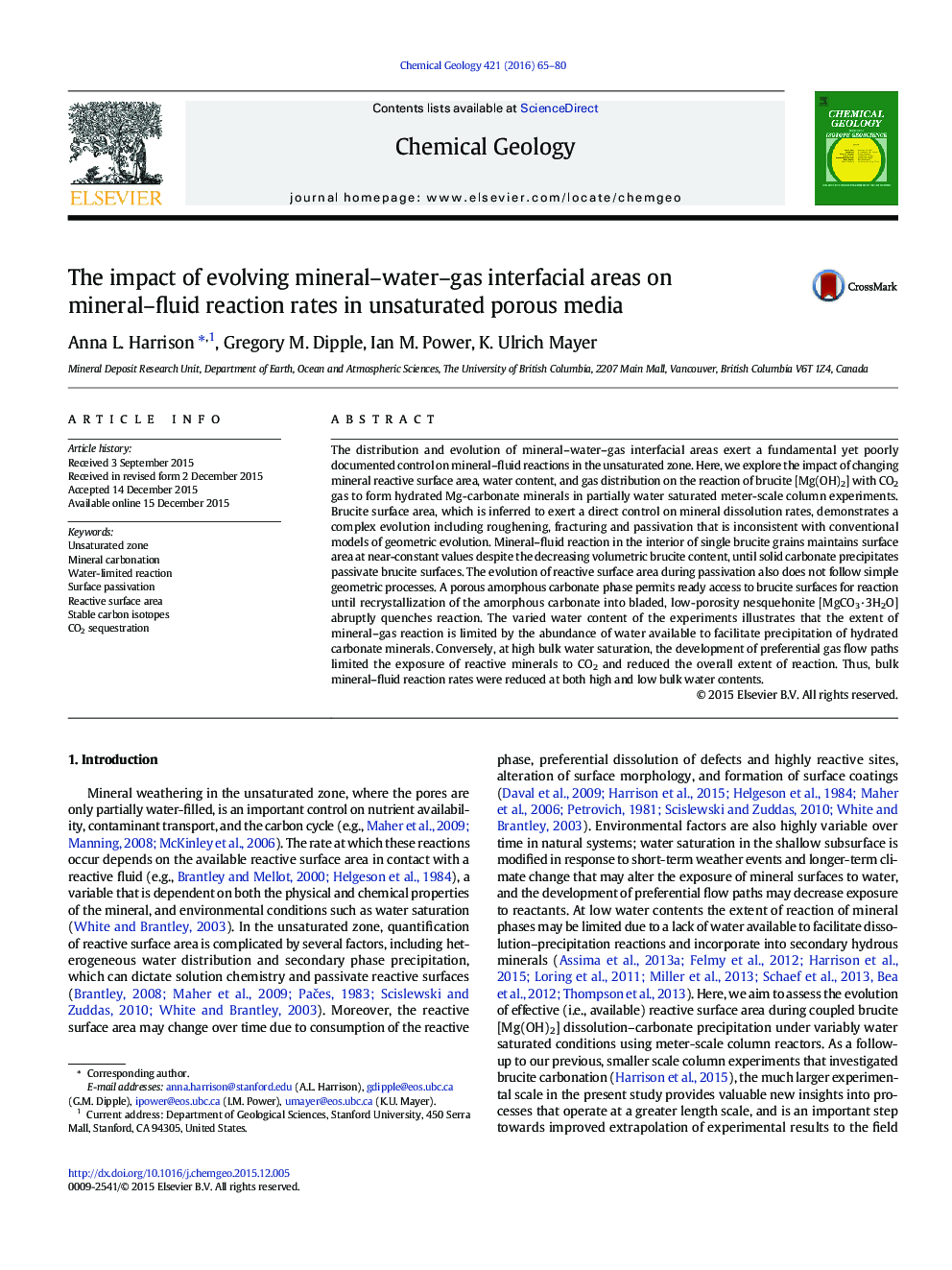| کد مقاله | کد نشریه | سال انتشار | مقاله انگلیسی | نسخه تمام متن |
|---|---|---|---|---|
| 6436174 | 1637553 | 2016 | 16 صفحه PDF | دانلود رایگان |

- Highly non-geometric evolution of reactive surface area exerts a primary control on mineral (brucite)-fluid reaction rates.
- The extent of reaction is limited by the volume of water available to facilitate dissolution-precipitation mechanisms.
- High water saturation encouraged preferential gas flow paths, limiting exposure of reactive minerals to CO2.
- Mineral-fluid reaction is reduced at both high and low water contents.
The distribution and evolution of mineral-water-gas interfacial areas exert a fundamental yet poorly documented control on mineral-fluid reactions in the unsaturated zone. Here, we explore the impact of changing mineral reactive surface area, water content, and gas distribution on the reaction of brucite [Mg(OH)2] with CO2 gas to form hydrated Mg-carbonate minerals in partially water saturated meter-scale column experiments. Brucite surface area, which is inferred to exert a direct control on mineral dissolution rates, demonstrates a complex evolution including roughening, fracturing and passivation that is inconsistent with conventional models of geometric evolution. Mineral-fluid reaction in the interior of single brucite grains maintains surface area at near-constant values despite the decreasing volumetric brucite content, until solid carbonate precipitates passivate brucite surfaces. The evolution of reactive surface area during passivation also does not follow simple geometric processes. A porous amorphous carbonate phase permits ready access to brucite surfaces for reaction until recrystallization of the amorphous carbonate into bladed, low-porosity nesquehonite [MgCO3·3H2O] abruptly quenches reaction. The varied water content of the experiments illustrates that the extent of mineral-gas reaction is limited by the abundance of water available to facilitate precipitation of hydrated carbonate minerals. Conversely, at high bulk water saturation, the development of preferential gas flow paths limited the exposure of reactive minerals to CO2 and reduced the overall extent of reaction. Thus, bulk mineral-fluid reaction rates were reduced at both high and low bulk water contents.
267
Journal: Chemical Geology - Volume 421, 10 February 2016, Pages 65-80